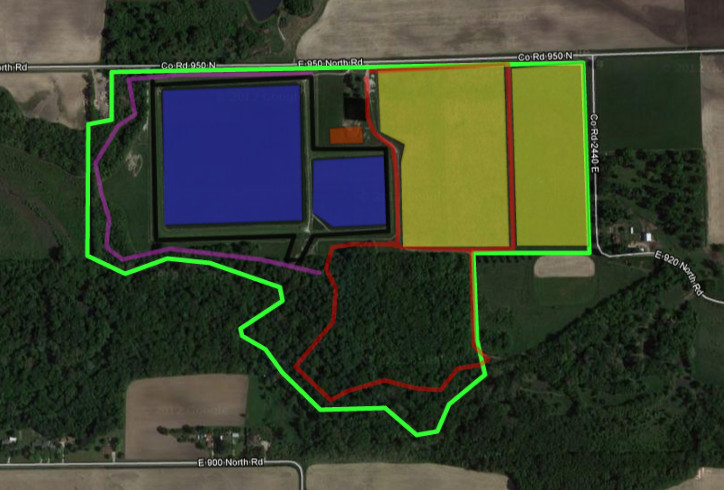This large bend in the Little Calumet River is located roughly between 127th & 130th Streets just to the west of Indiana Avenue in southeast Chicago. Its strategic location (adjacent to clean water outflow from the Calumet Water Reclamation Plant, as well as warm water outflow from steel industry across the river in Riverdale) makes it a magnet for wintering waterfowl and wintering waterbirds in general. When other rivers and lakes freeze up during cold winters, the Bend invariably remains open due to warm water outflow, and waterfowl concentrate here in large numbers.
The Bend is best birded from the MWRD SEPA Station #2, located on the south side of 127th Street about a block west of State Street in Chicago. This area is private property, but MWRD has no objection to birders observing from this location if certain protocols and restrictions are observed. Birders who accept the risks of birding from the SEPA Station #2 viewing platform must notify the MWRD Police Section at 708-588-4035 prior to their visit. Birders are required to park across 127th Street and walk to the SEPA Station grounds (parking is not allowed at the SEPA Station). Keep an eye on your vehicle, as this is not the best of neighborhoods.
Birds found at the Bend from 2002 – 2013 include 25 waterfowl species (22 ducks). Regularly wintering waterfowl include Mute Swan, Gadwall, American Black Duck, Redhead, Ring-necked Duck, Greater Scaup, Lesser Scaup (hundreds), Bufflehead, Common Goldeneye, and Common Merganser. In addition, Tundra Swan, Wood Duck, American Wigeon, Northern Shoveler, Northern Pintail, Canvasback, Ruddy Duck, and all three scoters have also occasionally appeared at the Bend during the winter months. An immature male King Eider found on February 17, 2010 was by far the rarest waterfowl species recorded at this location. Duck hybrids found here have included Gadwall X Mallard, American Black Duck X Mallard, and Mallard X Northern Pintail.
Other regularly wintering waterbirds include Pied-billed Grebe, Double-crested Cormorant, Great Blue Heron, American Coot, and Belted Kingfisher. Black-crowned Night-Herons are far less reliable in winter, but they occasionally do occur. Bald Eagles are occasional during winter (a pair of Bald Eagles built a nest at nearby Mittal Woods in 2004).
Herring Gulls and Ring-billed Gulls (hundreds) regularly winter at this location. Although not particularly noteworthy as a gull location during most years, Bonaparte’s, Thayer’s, Iceland, Glaucous, and Great Black-backed Gull have all been found here during the winter months since 2002.
